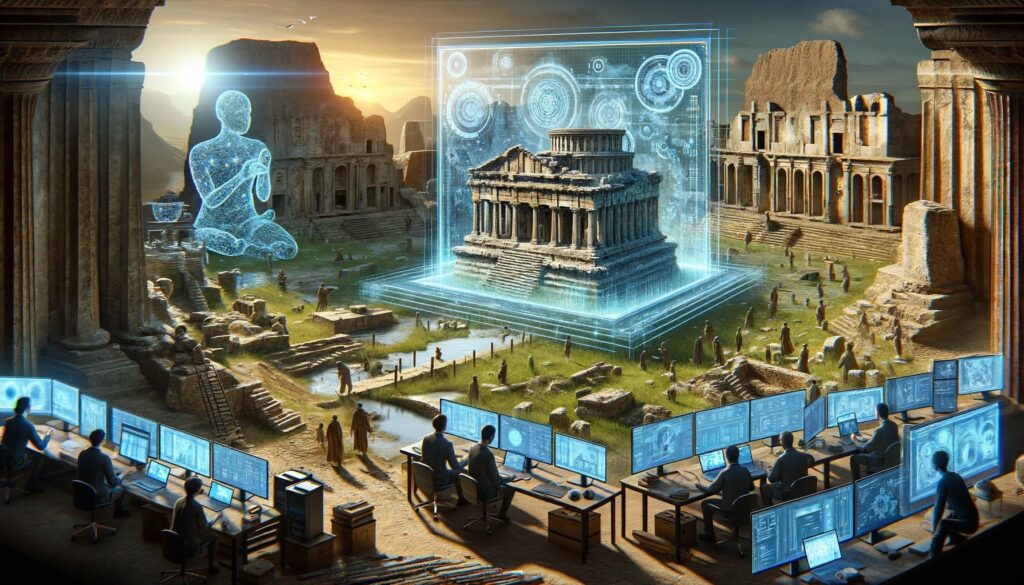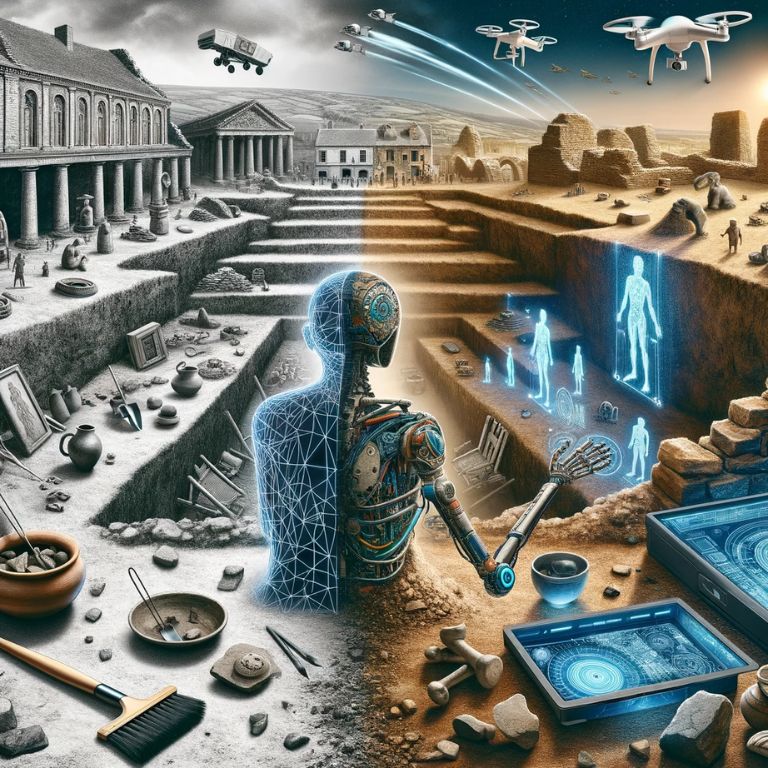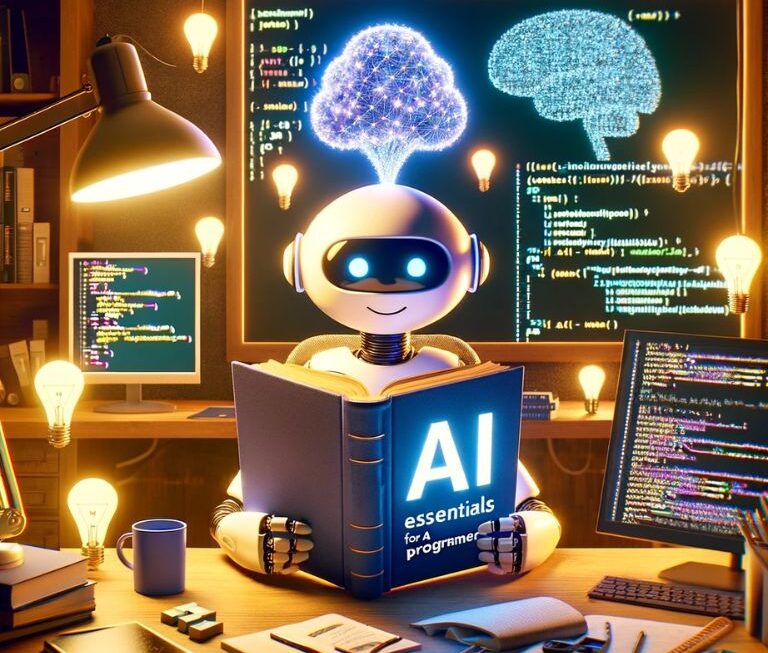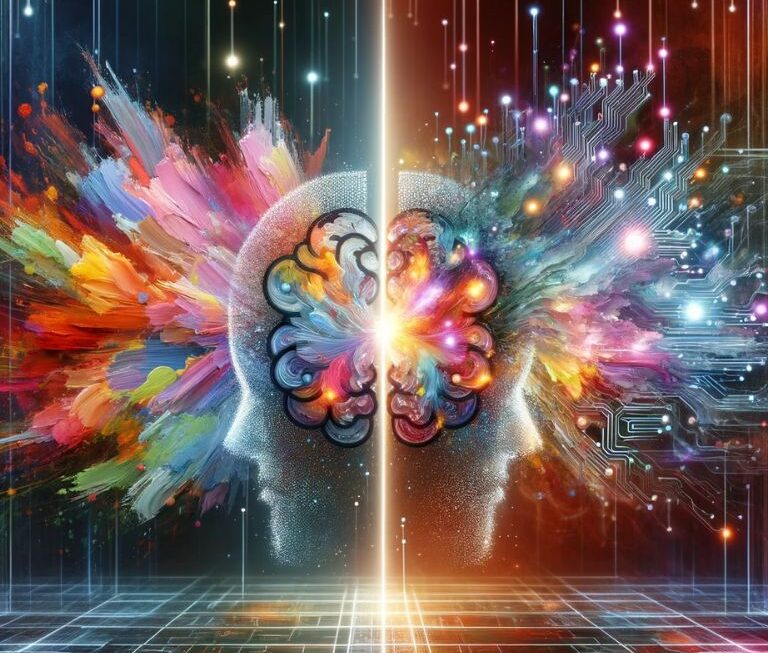In recent years, the field of archaeology has undergone a transformative shift, thanks to the integration of Artificial Intelligence (AI). This union of ancient studies and modern technology is redefining how we uncover and interpret the past. While archaeology traditionally relied on manual excavation and analysis, AI introduces a new era of efficiency, accuracy, and depth in archaeological research.
The Advent of AI in Archaeology
Archaeology, as a discipline, has always been about piecing together the stories of our past. It involves meticulous excavation, artifact analysis, and site interpretation. Traditionally, these tasks required extensive human effort and expertise, often taking years or even decades. The introduction of AI into this field marks a significant turning point. By leveraging machine learning, data analysis, and predictive algorithms, AI has the capability to analyze vast quantities of archaeological data much faster than humanly possible. This not only accelerates the research process but also unveils insights that might have been overlooked.
Traditional Methods vs. AI Advancements
To appreciate the impact of AI, it’s crucial to understand the traditional methods of archaeology:
| Traditional Method | AI Advancement |
| Manual excavation | AI-guided excavation tools |
| Visual inspection of artifacts | Automated artifact recognition using image analysis |
| Data interpretation by experts | Machine learning algorithms analyzing patterns in data |
| Conservative site restoration | AI-powered virtual reconstruction of sites |
The Synergy of AI and Archaeology
The integration of AI in archaeology is not about replacing the archaeologist but enhancing their capabilities. AI tools act as a powerful assistant, processing and analyzing data at an unprecedented scale. This synergy allows archaeologists to focus on the interpretive aspects of their work, drawing conclusions and narratives from the data provided by AI.
Analyzing Artifacts with AI
The integration of Artificial Intelligence in the analysis of archaeological artifacts has revolutionized the way we understand historical objects. This transformation is primarily driven by two aspects: advanced techniques in AI for artifact analysis, and real-world case studies that demonstrate the successful application of these techniques.
Techniques in AI for Artifact Analysis
AI’s role in artifact analysis mainly revolves around image recognition and pattern analysis. Machine learning models, especially convolutional neural networks (CNNs), are trained on vast datasets of known artifacts. These models learn to identify and categorize artifacts based on shape, size, color, and even texture. AI can also employ 3D scanning and modeling techniques, providing a comprehensive digital representation of artifacts. These methods are particularly useful in identifying fragmentary or eroded objects, where traditional methods might struggle.
Showcasing Successful Artifact Identification and Analysis
Several case highlight the efficacy of AI in artifact analysis. One notable example is the use of AI in identifying and categorizing ancient pottery shards. Researchers trained AI models with images of known pottery pieces, enabling the system to successfully categorize shards found in excavations, sometimes even pinpointing their geographical origin and historical period.
Another significant case involves the analysis of ancient scripts. AI algorithms have been used to decipher inscriptions on ancient stones or manuscripts. By comparing these inscriptions to a vast database of known scripts, AI can often make out writings that are invisible or unclear to the human eye. This capability has unlocked new understandings of historical texts that were previously thought to be indecipherable.
Reconstructing Ancient Sites Using AI Models

The application of AI in archaeology extends beyond artifact analysis to the ambitious task of reconstructing ancient sites. This area of AI application is particularly exciting as it blends historical data with advanced technology to recreate lost worlds.
How AI Aids in Virtual Reconstruction
AI aids in virtual reconstruction by utilizing advanced algorithms that can interpret and integrate various data types – from ground-penetrating radar readings to minute archaeological findings. These algorithms can generate 3D models of historical sites, offering a virtual view of how these places might have looked in their prime. This process is enhanced by AI’s ability to fill in gaps using predictive modeling. By analyzing patterns and similarities with known structures, AI can extrapolate possible designs and layouts of partially damaged or eroded sites, thus bringing a new level of depth and accuracy to archaeological reconstructions.
Examples of Reconstructed Sites and Their Historical Impact
- Ancient Rome Reimagined: AI has been used to reconstruct parts of ancient Rome, giving us a vivid glimpse into the architectural grandeur of the Roman Empire. This reconstruction has not only provided insights into Roman urban planning but also enhanced our understanding of social and cultural aspects of Roman life.
- The Virtual Restoration of Pompeii: Using AI, researchers have recreated several buildings and public spaces in Pompeii. These models allow us to visualize the city as it was before the catastrophic eruption of Mount Vesuvius, offering invaluable insights into the daily lives of its inhabitants.
- Rebuilding Babylon: AI models have contributed to the reconstruction of the city of Babylon, including the famed Hanging Gardens, one of the Seven Wonders of the Ancient World. These reconstructions provide a clearer picture of Mesopotamian civilization and its architectural ingenuity.
- Mayan Cities Uncovered: In Central America, AI has helped in mapping and reconstructing ancient Mayan cities hidden under dense forest canopies. This has been crucial in understanding the extent and sophistication of Mayan urban centers.
AI-Driven Discoveries: Uncovering Hidden Histories
The advent of AI in archaeology has not only streamlined existing processes but has also led to groundbreaking discoveries, unveiling hidden chapters of human history.
Discussing Significant Discoveries Made Possible by AI
AI’s capacity to analyze vast datasets has been instrumental in uncovering significant archaeological findings. One of the most notable discoveries is the identification of unknown archaeological sites. For example, AI algorithms have analyzed satellite images to reveal previously undiscovered structures and settlements, even in densely forested or remote areas. In regions like South America and the Middle East, this has led to the discovery of ancient cities and ceremonial sites, offering new insights into civilizations that flourished thousands of years ago. Furthermore, AI has played a crucial role in detecting subtle changes in landscapes, enabling archaeologists to locate burial sites and hidden architectural remains without the need for intrusive physical excavation.
The Role of AI in Interpreting Archaeological Data
- Pattern Recognition in Artifacts: AI excels in identifying patterns in artifacts that might be invisible to the human eye, aiding in the classification and dating of these objects.
- Deciphering Ancient Scripts: AI algorithms have been used to decode ancient scripts, bridging gaps in our understanding of historical languages and texts.
- Environmental Analysis: AI assists in reconstructing past environments by analyzing soil samples, pollen, and other ecological data, helping to understand the context in which ancient people lived.
- Cultural Connectivity: By examining trade goods, weaponry, and other cultural artifacts, AI can trace connections between distant civilizations, shedding light on historical trade routes and cultural exchanges.
- Predictive Analysis: AI’s predictive capabilities enable archaeologists to hypothesize about the development of ancient societies, including urban planning, social structures, and economic systems.
Challenges and Limitations in AI-Aided Archaeology

While AI has brought remarkable advancements to archaeology, it is not without its challenges and limitations. Acknowledging these is crucial for the responsible and effective use of technology in the field.
Addressing the Limitations and Challenges Faced
- Data Quality and Quantity: The accuracy of AI in archaeology heavily relies on the quality and quantity of data fed into the algorithms. Inadequate or biased data can lead to inaccurate conclusions.
- Overreliance on Technology: There’s a risk of becoming overly reliant on AI, potentially overlooking the nuanced understanding that comes from traditional archaeological methods.
- Interpretation Limitations: AI can identify patterns and make predictions, but it lacks the ability to understand cultural and historical contexts as comprehensively as a human expert.
- Technological Accessibility: Advanced AI tools might not be accessible to all researchers, especially in underfunded archaeological projects or in developing countries.
- Maintenance and Upkeep of AI Systems: Keeping AI systems updated and running requires continuous financial and technical resources, which can be a challenge for some institutions.
Ethical Considerations and the Role of Human Expertise
While AI offers powerful tools for analysis and discovery, it’s important to balance its use with ethical considerations and human expertise. Ethical concerns include the potential for AI to be used in ways that could damage undiscovered archaeological sites or the misinterpretation of cultural artifacts. Additionally, the impersonal nature of AI-driven analysis could detach the human connection and cultural sensitivity essential in archaeology.
Integrating AI into Archaeology
The integration of AI into archaeology is not just a passing trend but a harbinger of more profound changes and advancements in the field. This evolving landscape offers exciting possibilities for the future of archaeological research.
Predictions and Potential Advancements in AI for Archaeology
- Enhanced Predictive Modeling: Future AI systems could offer more precise predictive models, enabling archaeologists to identify potential sites with greater accuracy and less ground disturbance.
- Improved Artifact Analysis: AI might evolve to provide more detailed analyses of artifacts, possibly determining the exact origin and even the artisan in some cases.
- Automated Excavation Tools: Advancements in AI could lead to more sophisticated excavation tools that can autonomously conduct digs with minimal risk of damaging artifacts.
- Virtual Reality Integrations: AI combined with virtual reality (VR) could allow for immersive exploration of archaeological sites, accessible to both researchers and the public.
- Cross-disciplinary Data Integration: Future AI applications may integrate data from various scientific disciplines, offering a more holistic view of archaeological sites and their historical contexts.
The Evolving Role of Archaeologists in an AI-Driven Era
In the AI era, archaeologists will shift towards interpretive and analytical roles, bridging AI-generated data with historical context. They may engage more in public education, using AI insights to make history accessible to a wider audience. Their evolving role will include guiding AI development for ethical and accurate historical representation. Human expertise remains essential, providing cultural and historical insight AI cannot match. This synergy between AI and human expertise is vital for ethical and effective archaeology, ensuring technology respects archaeological integrity and significance.
Conclusion: The New Era of Archaeological Exploration
AI’s impact on archaeology heralds a new era of historical exploration, revolutionizing methods and expanding possibilities. It aids in artifact analysis and virtual site reconstruction, empowering archaeologists with unprecedented insights. While this fusion of technology and history showcases human ingenuity and our thirst for knowledge, it poses challenges, such as balancing technology with historical preservation and respecting cultural nuances. The synergy between AI and archaeology promises a deeper grasp of history and a richer understanding of human civilization, offering the potential to reveal more of our shared past, a story belonging to all humanity.




